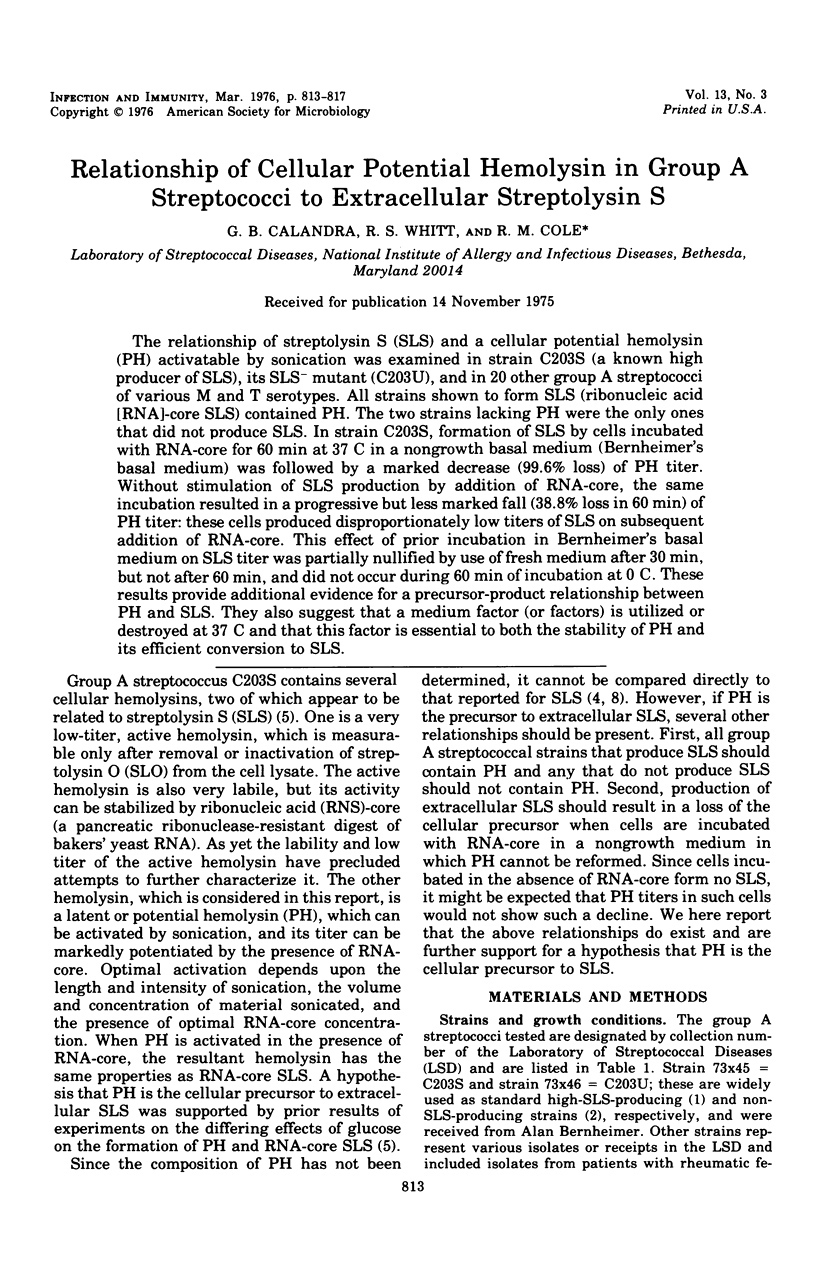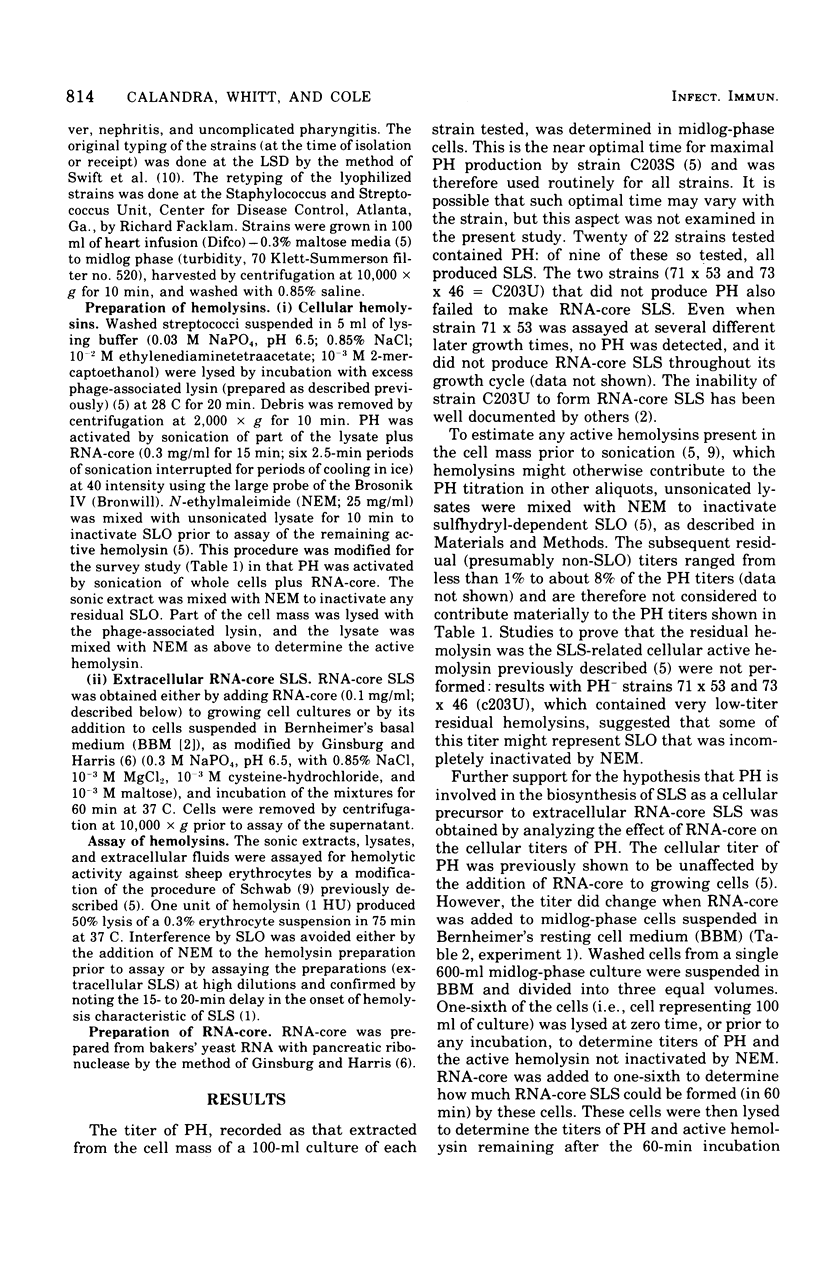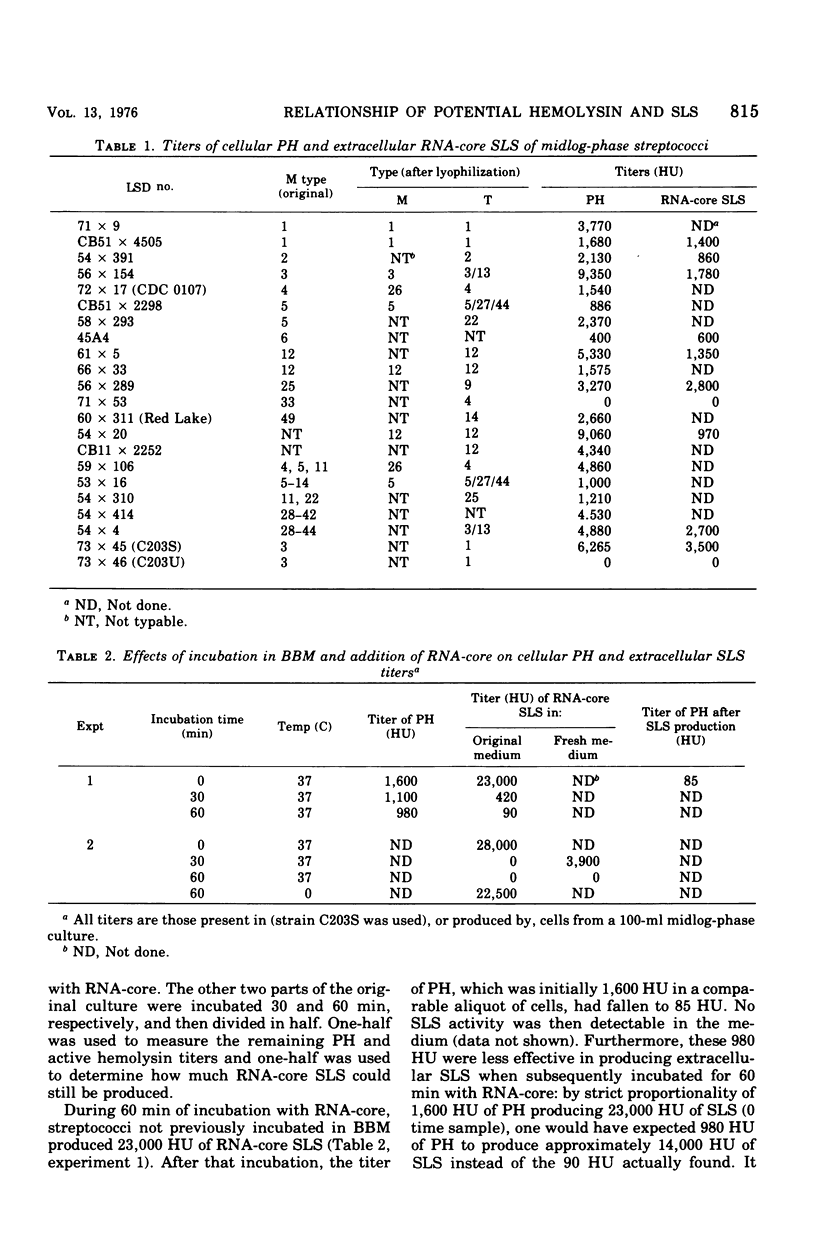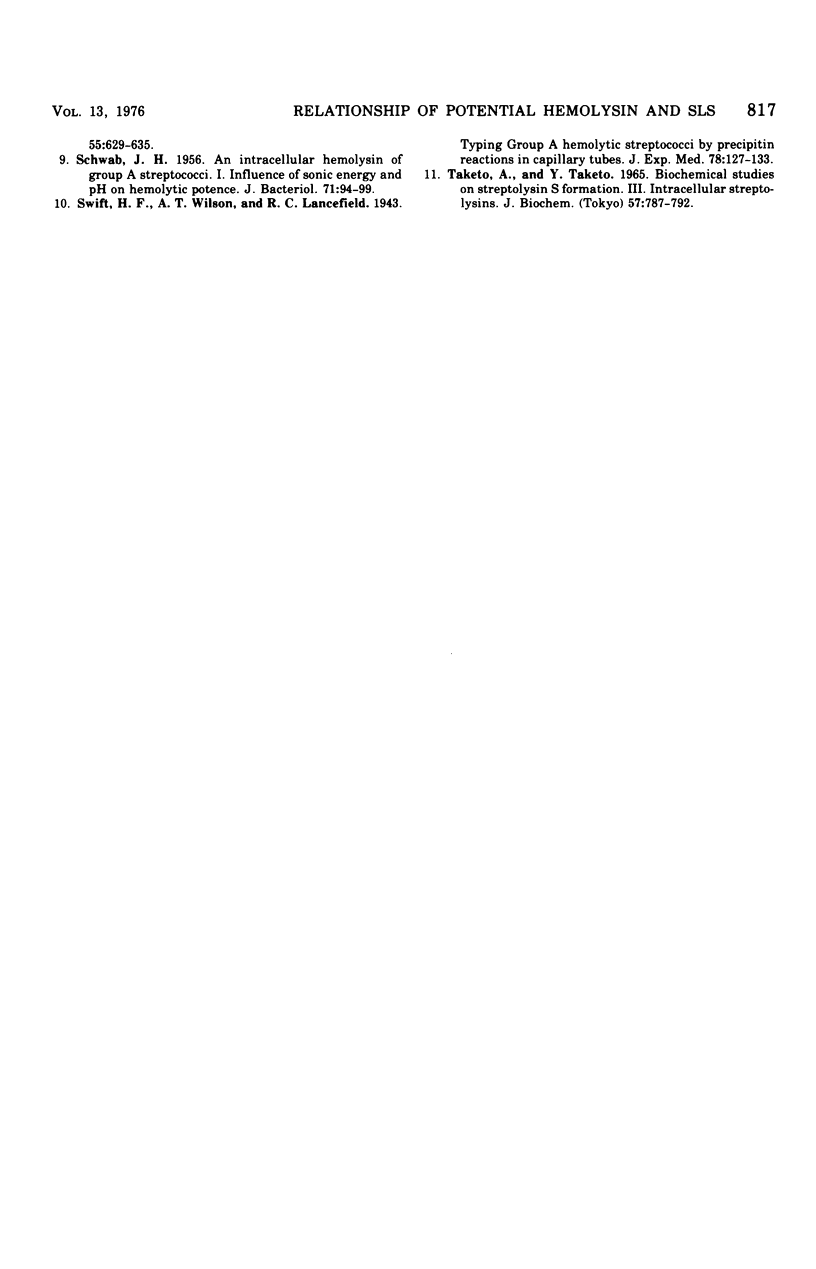Abstract
The relationship of streptolysin S (SLS) and a cellular potential hemolysin (PH) activatable by sonication was examined in strain C203S (a known high producer of SLS), its SLS(-) mutant (C203U), and in 20 other group A streptococci of various M and T serotypes. All strains shown to form SLS (ribobycleic acid (RNA)-core SLS) contained PH. The two strains lacking PH were the only ones that did not produce SLS In strain C203S, formation of SLS bycells incubated with RNA-core for 60 min at 47 C in a nongrowth basal medium (Bernheimer's basal medium) was followed by a marked decrease (99.6% loss) of PH titer. Without stimulation of SLS production by addition of RNA-sore, the same incubation resulted in a progressive but less marked fall (38.8%loss in 60 min) of PH titer: these cells produced disproportionately low titers of SLS on subsequent addition of RNA-core. This effect of prior incubation in Bernheimer's basal medium on SLS titer was partially nullified by use of fresh medium after 30 min, but not after 60 min, and did not occur during 60 min of incubation at OC. These results provide additional evidence for a precursor-product relationship between PH and SLS. They also suggest that a medium factor (or factors) is utilized or destroyed at 37 C and that this factor is essential to both the stability of PH and its efficient conversion to SLS.
Full text
PDF




Selected References
These references are in PubMed. This may not be the complete list of references from this article.
- Bernheimer A. W. Physical behavior of streptolysin S. J Bacteriol. 1967 Jun;93(6):2024–2025. doi: 10.1128/jb.93.6.2024-2025.1967. [DOI] [PMC free article] [PubMed] [Google Scholar]
- Calandra G. B., Oginsky E. L. Cellular streptolysin S-related hemolysins of group A Streptococcus C203S. Infect Immun. 1975 Jul;12(1):13–28. doi: 10.1128/iai.12.1.13-28.1975. [DOI] [PMC free article] [PubMed] [Google Scholar]
- GINSBURG I., HARRIS T. N. OXYGEN-STABLE HEMOLYSINS OF GROUP A STREPTOCOCCI. II. CHROMATOGRAPHIC AND ELECTROPHORETIC STUDIES. J Exp Med. 1963 Dec 1;118:919–934. doi: 10.1084/jem.118.6.919. [DOI] [PMC free article] [PubMed] [Google Scholar]
- SCHWAB J. H. An intracellular hemolysin of group A Streptococci. I. influence of sonic energy and pH on hemolytic potency. J Bacteriol. 1956 Jan;71(1):94–99. doi: 10.1128/jb.71.1.94-99.1956. [DOI] [PMC free article] [PubMed] [Google Scholar]
- Taketo A., Taketo Y. Biochemical studies on streptolysin S formation. 3. Intracellular streptolysins. J Biochem. 1965 Jun;57(6):787–792. doi: 10.1093/oxfordjournals.jbchem.a128145. [DOI] [PubMed] [Google Scholar]


